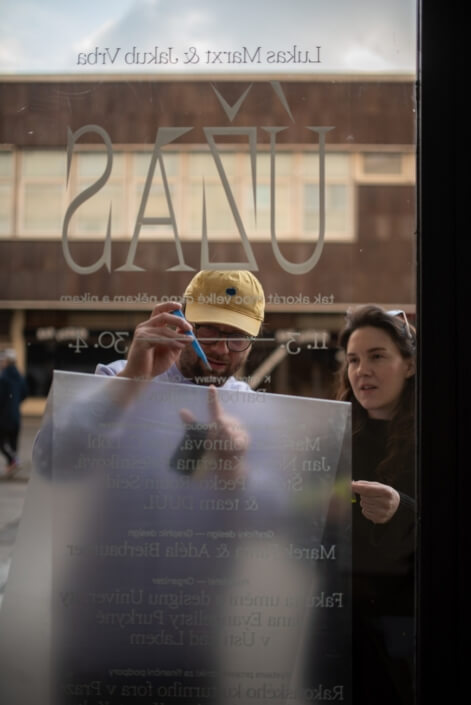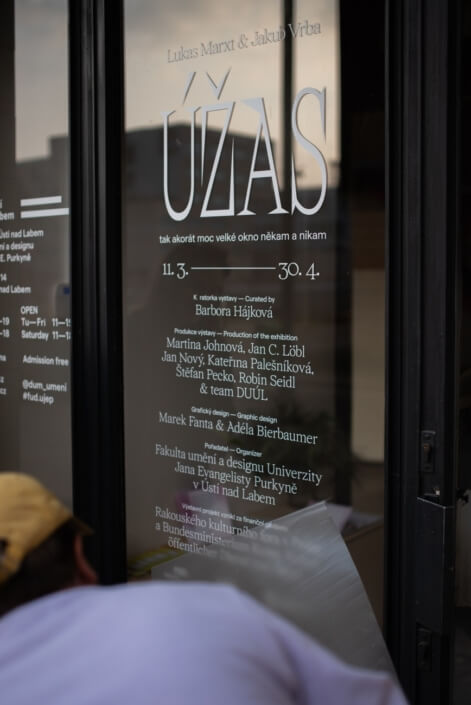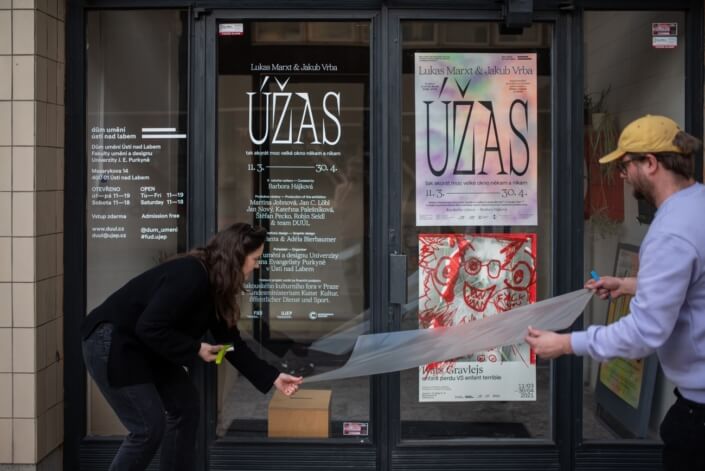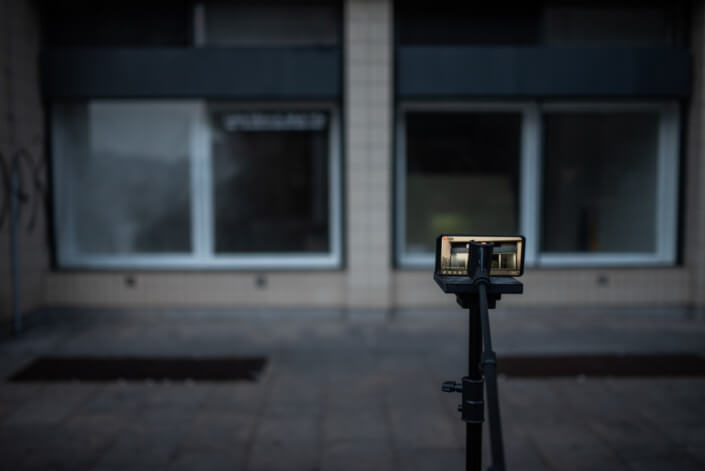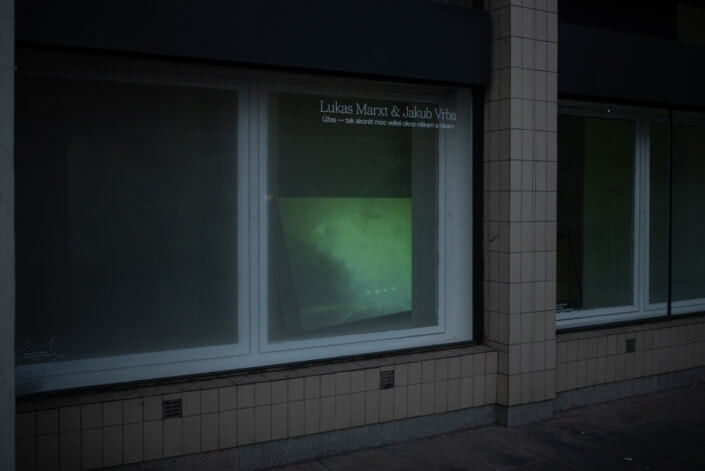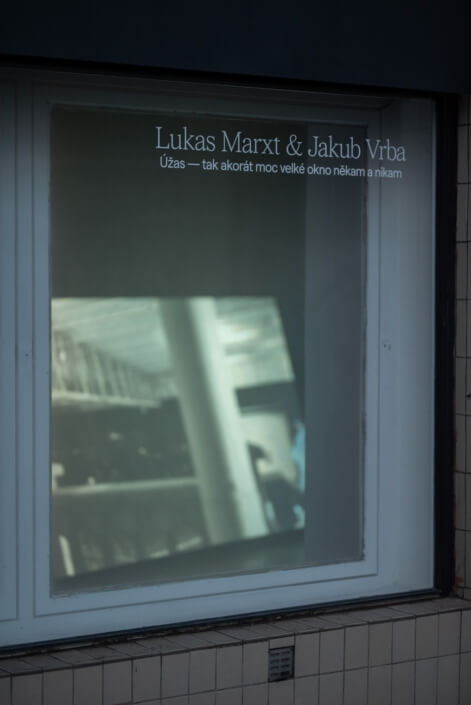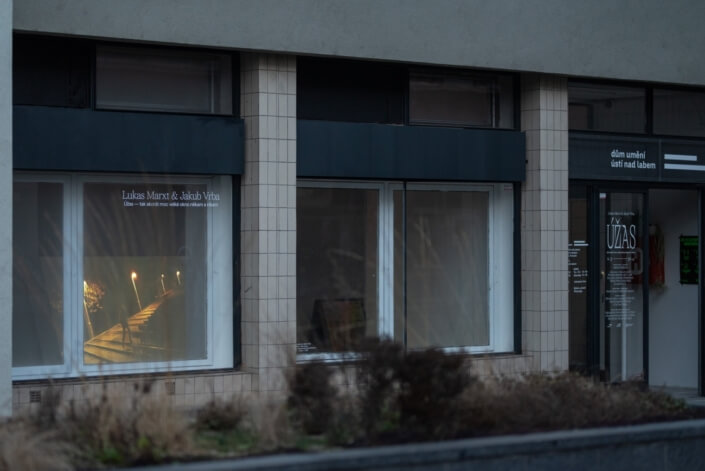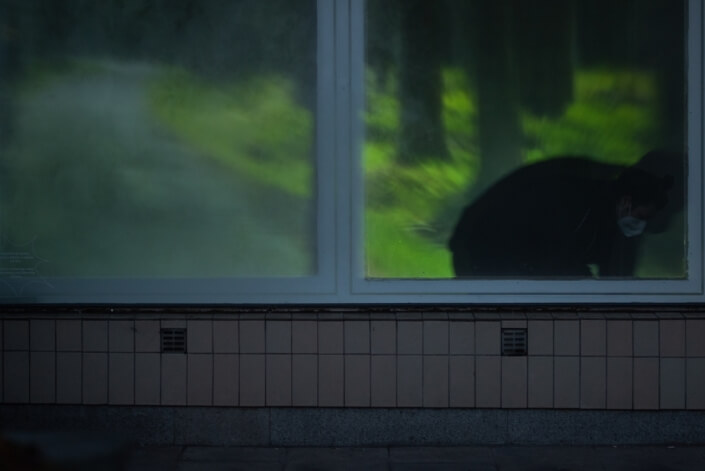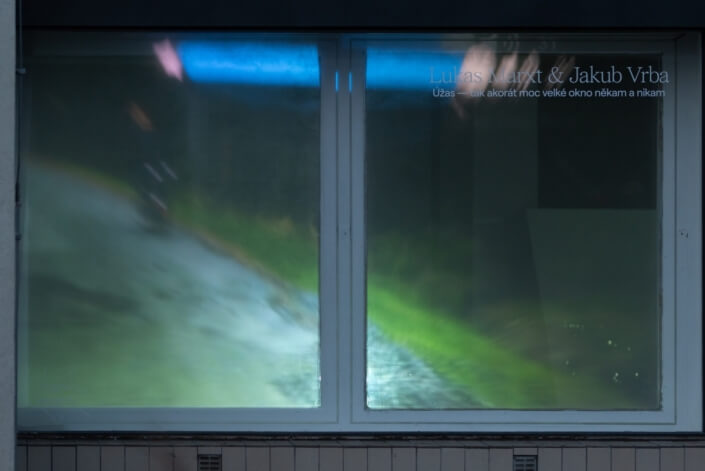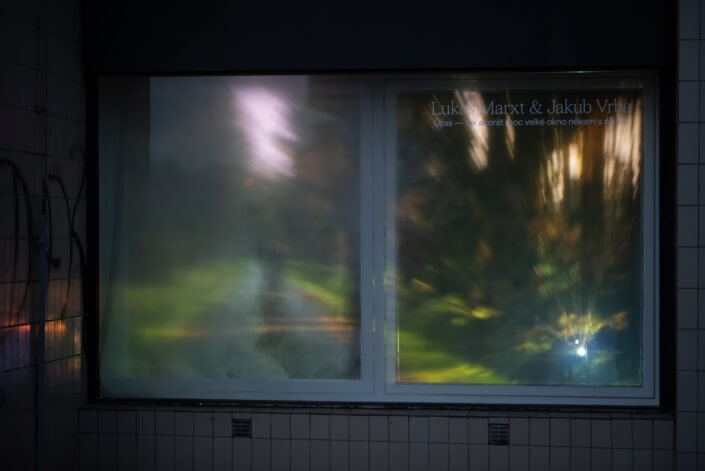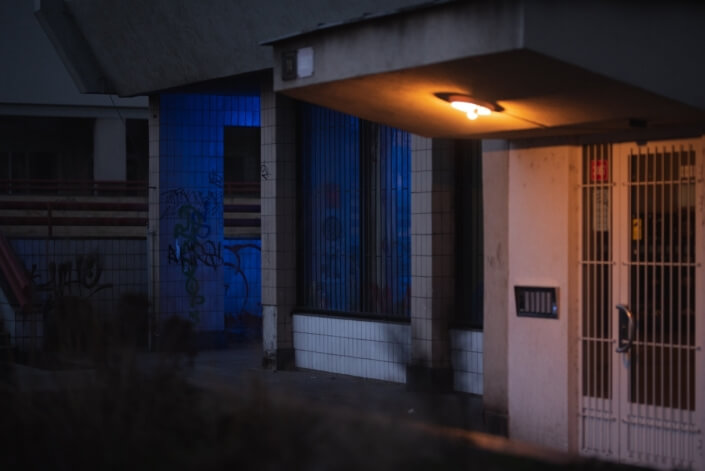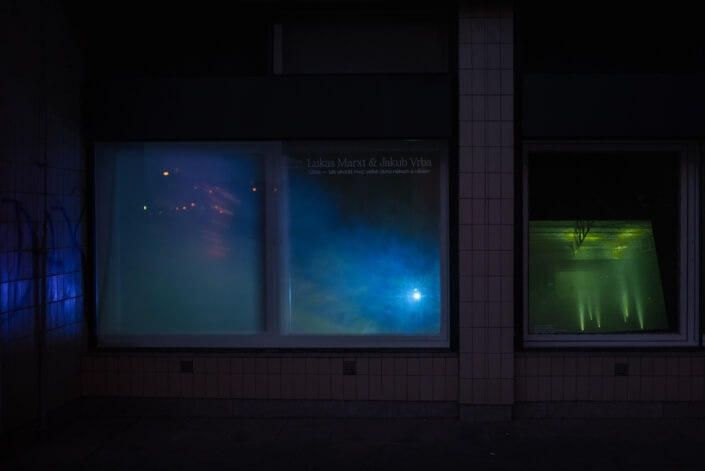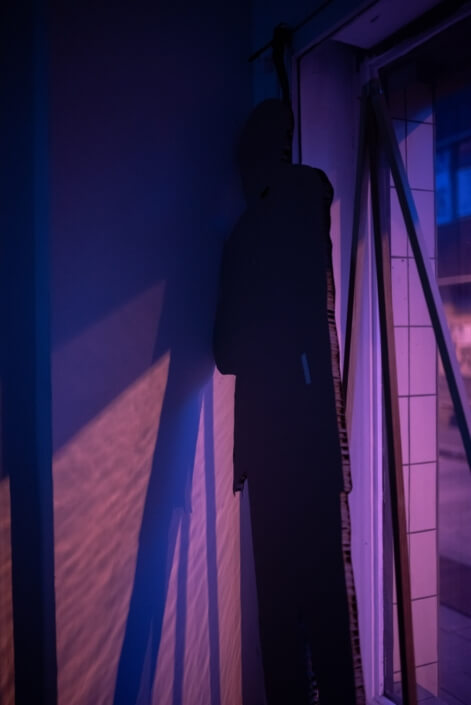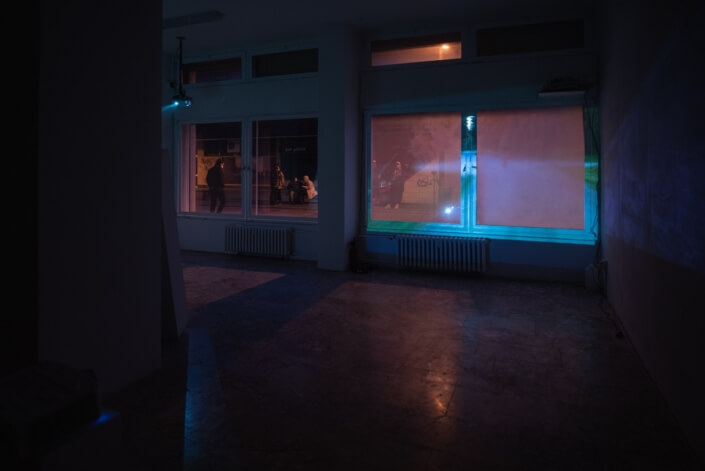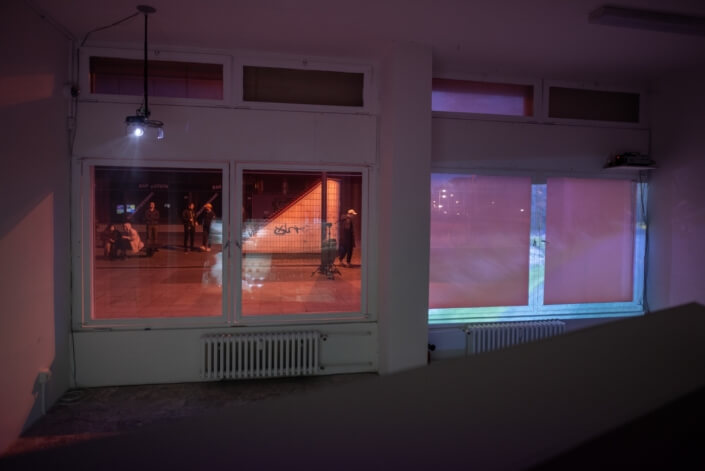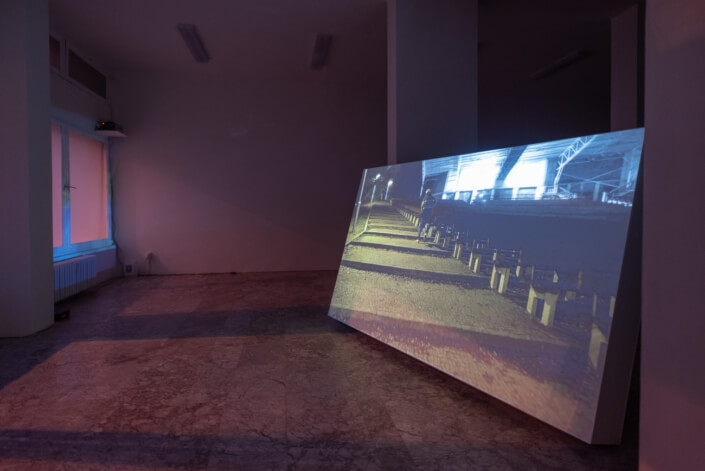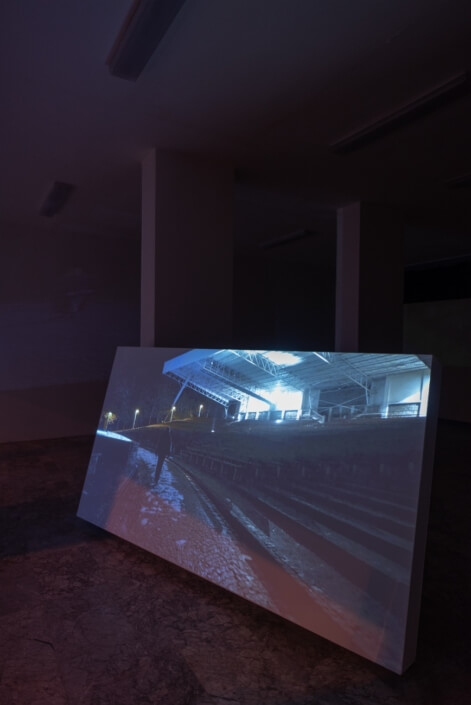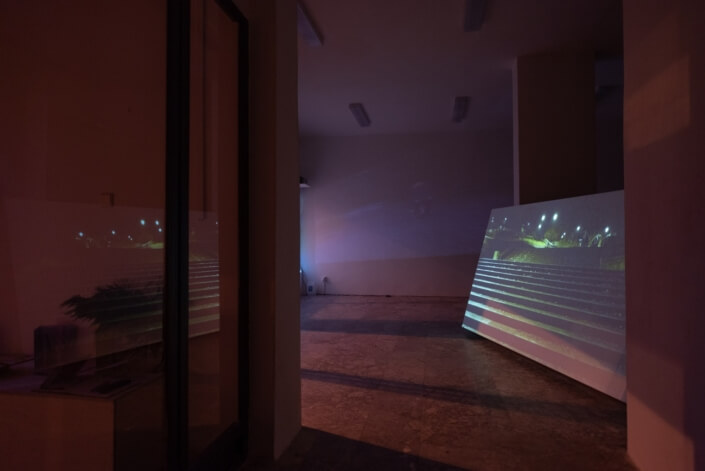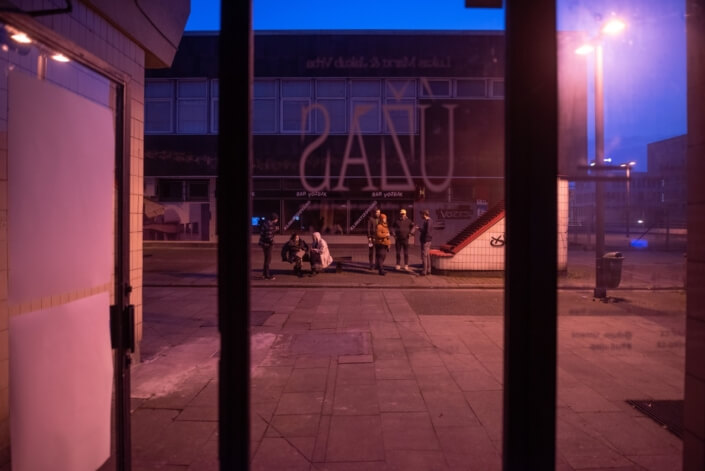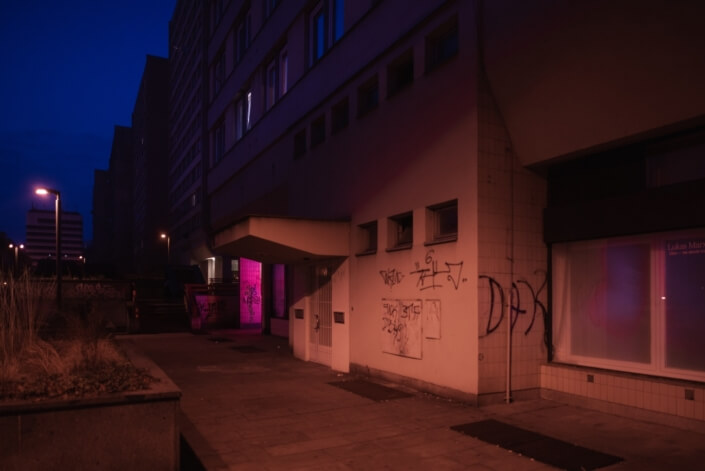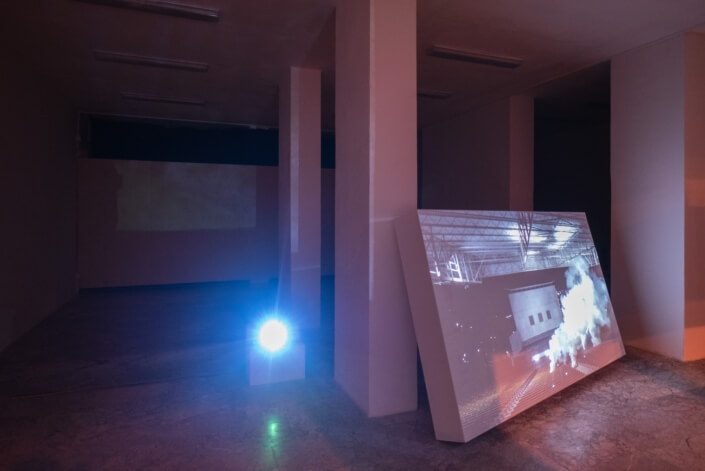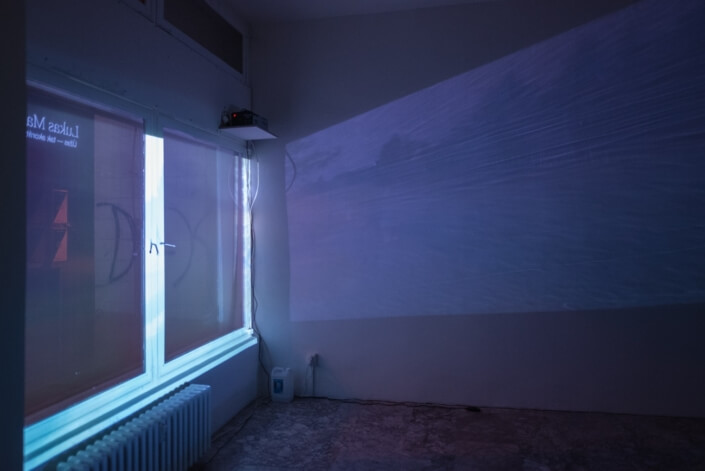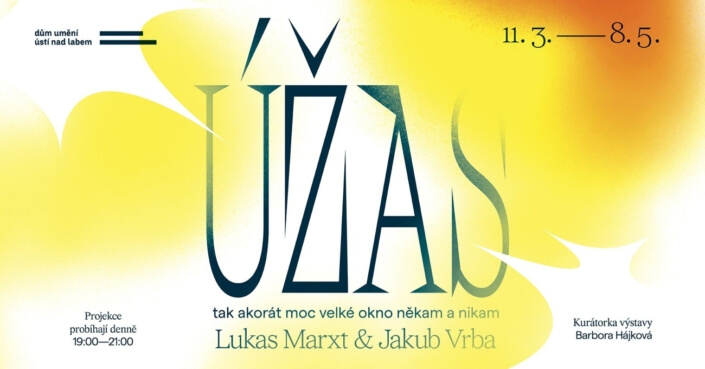Spectacle – just the right size of a window to nowhere or somewhere
The collaboration between Jakub Vrba, a Czech artist based in Austria, and Lukas Marxt, an Austrian who has established himself on the international art scene, has been evolving since 2015. In their joint work, they work as explorers, trackers, and pioneers capturing the environment in remote landscapes, but also in familiar locations. Marxt’s main means of expression is the film processing of specific spaces. Jakub Vrba expresses himself in a rather performative and post-conceptual way and works with various media. By combining these two approaches, the author’s duo creates video performances with their characteristic form and narration. In joint experimental films, the authors of the exhibition Úžas – tak akorát velké okno někam a nikam (Spectacle–just the right size of the window to nowhere and somewhere) reflect places that carry various connotations — historical, social, ecological and economic. There is a significant interest in exploring space and time through a technical image. In the sense of the term “post-history”, as interpreted by Vilém Flusser, the creators do not primarily relate to the above-mentioned correlations in exhibited work, which was realized in the Ústí summer cinema. They give up a critical evaluation of contexts and focus in the way of Deleuze’s conception of “transcendental empiricism” on the visualization and awareness of personal experience with space and its perception in the first place. While watching the film, the viewer can realize the exceptional space of a summer cinema differently than with a normal physical experience, thanks to staged performative events in which artists use pyrotechnics and film smoke.
Although the summer cinema is located in the city centre and can accommodate up to 14,000 spectators, in everyday life the place is very quiet (which builds on the thinking and interpreting in previous works). This fact was one of the reasons why the artists decided to make their film in this location. Thanks to the oversized scale of the auditorium and stage, Marxt and Vrba were able to explore a hypothetical collective and individual experience with the space. One part of the film is expressed from the individual point of view of the character in motion. But then the shot stabilizes and the void of the huge space that could be shared in the community dominates the overall mood. Also, the fact that the cinema is completely maintained and yet does not serve its purpose is fascinating. It was as if the place was waiting to be filled and brought back to life. To a certain extent, the authors follow a utopian and idealistic moment. It is up to society to make an effort to restore community sharing of the space. Another reason for deciding to shoot in a summer cinema was their interest in the film screening itself. This can be seen in their approach to the presentation of their works.
The form of the projection in the House of Arts in Ústí nad Labem on the special projection object refers to the physical aspect of the work. The projection becomes an artifact in physical space. At a time when many art productions are presented in an online environment, this feat is exceptional. Viewing the newly created work is possible thanks to the specific character of the exhibition space, which the House of Arts in Ústí nad Labem temporarily uses. The exhibition also includes an experimental screening, which will take place every Wednesday and Saturday from 6 pm. Both the previous joint works of the author’s pair (Beautifully maintained and well located, 2021; two-channel video installation In a beautiful and quiet location, 2015) and individual works will be gradually presented within it. The artworks are visible from the public space in front of the Ústí nad Labem House of Arts through the gallery windows. The method of installation points to difficult exhibition conditions during pandemic measures and metaphorically expresses the opacity of the current social situation.
The artists don’t want to point out historical or other social correlations primarily, nevertheless from the curatorial point of view (and from the point of view of the citizen living in this context), I will allow myself to contextualize the work on a geopolitical level. The summer cinema complex was built in the 1950s – during the times of harsh Stalinism. The production presented in the cinema also matched this situation (in addition to film screenings, opera, operetta, and mass music production). The cultural program (except for the relaxed 1960s) served mainly for the presentation of state production tolerated or supported by the state institutions and their cultural policy. For example, several years of the tramp and folk festival Porta took place in the cinema complex. Most of the society accepted the folk and tramp subculture as subversive to the totalitarian political system, but Porta was organized by the Socialist Youth Union. Even with idealistic thinking about a space that could bring a moment of shared time and cultural values to the community, it is important to be aware of the original intention and historical context that led to the creation of this space. The exhibition Úžas – tak akorát velké okno někam a nikam is freely connected to the exhibition project Mo(nu)mental topography, organized by the Faculty of Art and Design Jan Evangelista Purkyně University in Ústí nad Labem in 2018 and in which artists responded mainly to local historical and political context.
Lukas Marxt (1983, Gratz) is a visual artist and filmmaker. He lives and works in Cologne and Graz. Marxt clarified his interest in the dialogue between human and geological existence and the impact of human activity on nature during his studies in geography and environmental science at the University of Graz and further developed in his studies of audiovisual production at the University of Art and Design in Linz. He completed his master’s degree at the Academy of Media Arts in Cologne and attended a postgraduate program at the Academy of Fine Arts in Leipzig. Marxt’s artistic research oscillates between visual art and film production. His works have been presented in many solo and group exhibitions, including the Torrance Art Museum (Los Angeles, 2018), the Biennial of Painting, the Dhondt-Dhaenens Museum (Belgium, 2018), and the Rijeka Museum of Modern and Contemporary Art (Croatia, 2018). His films have been screened at many international film festivals, including the Berlinale (Germany, 2017 and 2018), Curtas Vila do Conde (Portugal, 2018), and the Gijón International Film Festival, where he won the Principado de Asturias Award for Best Short Film (Spain, 2018). In 2017, Lukas Marxt resided and worked in Southern California, exploring the ecological and socio-political structures surrounding the Salton Sea.
Jakub Vrba (1986, Karlovy Vary) lives and works in Vienna and Altmünster. In his work, he uses mainly, but not only, the medium of drawing, sculpture, video, and film. Jakub Vrba contributes comics and drawings to magazines and collective projects and also creates pyrotechnic sculptures and costumes in the form of a traditional Baroque theater. He deals with the phenomena of spectacle, pathos, unpaid work, and the dictatorship of randomness in everyday life by examining laws, reconstruction, practice, and study of space through formal and metaphorical exercises and sometimes even humor.
Spectacle – just the right size of a window to nowhere or somewhere
Lukas Marxt and Jakub Vrba
House of Arts Ústí nad Labem
11. 3. – 8. 5. 2021
Curator: Barbora Hájková

